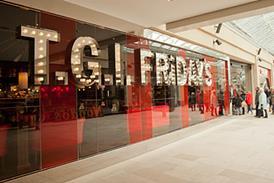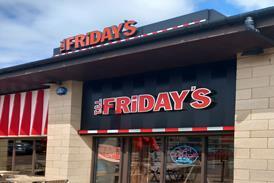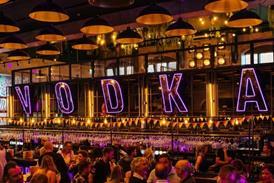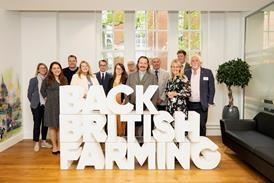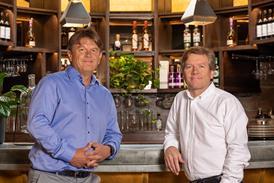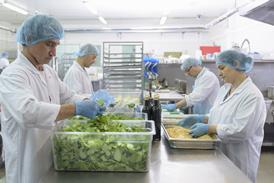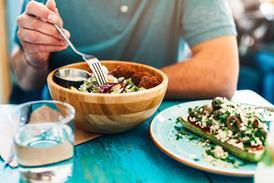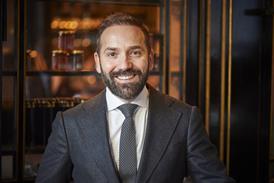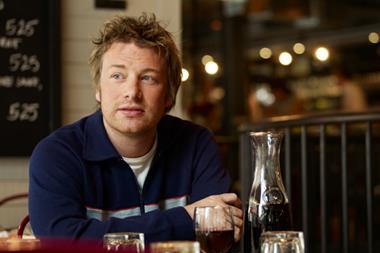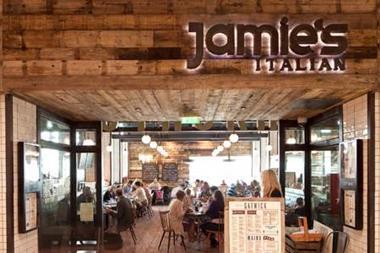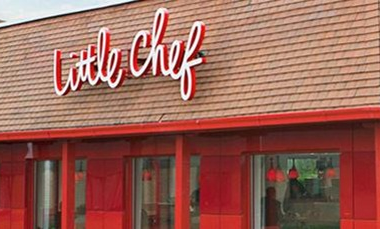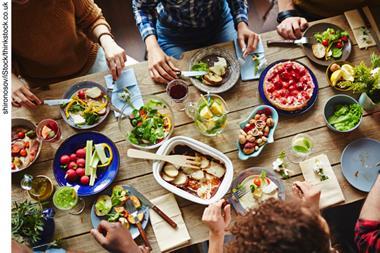It feels like a double-edged sword and indeed Simon Blagden, chief executive of the Jamie Oliver Restaurant Group, admits that those are the words used internally to describe the pros and cons of running a business spearheaded by the high-profile chef.
“Jamie’s profile attracts interest. If you go to a new territory overseas you get a lot of interest, as we did here when we started,” he says. “People driving three hours to one of our first sites, to then queue for three hours, is not a sustainable model. The positives outweigh the negatives, but everything we do has to be squeaky clean. The due diligence around our brand is significant; we can’t cut corners. The phrase we use to our managers and staff is treat everyone like a critic. The rise of social media, and feedback on feedback, has to be respected. Ignore it at your peril.”
Stake in the business
We revealed earlier this year that the high-profile chef had appointed the Royal Bank of Canada to explore options regarding his restaurant group, including a sale of a stake in the business, which is valued at c£200m. It is thought that the group explored a number of options for future growth, including securing a new investment partner versus remaining self-funding. It is understood the group received a significant amount of interest, but that no suitable custodian could be found which matched the values set down by Oliver that any investment partner would need to hold.
As a result, the business will continue with a self-funding model, through a mix of cash flow and royalty income.
M&C Report understands that the run rate EBITDA in the business currently stands at c£20m, which would value it
at c£200m. It is thought that funds brought in from any sale would have been used in part to fund the continued
expansion of both Jamie’s Italian and the chef’s barbecue steakhouse format, Barbecoa, internationally.
Blagden says: “We genuinely wanted to see who was out there in regards to funding and what the options were, price expectations etc. We could have done a deal with a couple of investors, but actually felt we are better off for now as a private business making our own decisions, continuing with the values we have created, rather than lose some control. To be frank we couldn’t find the right partner. Where we need help is going into the States with confidence and with developing an international franchise business. A lot of the investors were typical restaurant investors more comfortable with a cookie-cutter type of model, but ours is highly entrepreneurial and complicated. That makes the process more difficult, so the right match was hard to find.”
A drop in performance
Some had questioned whether a drop in performance in the UK had also had an impact on the level of interest, and although there has been some inevitable decline in performance over the past few years as the rest of the sector has played catch-up and competition has increased, Blagden is happy with where the group is.
He says: “This year we are very pleased with how things are going. The UK for us has really steadied out and we are starting to see some real improvements across the estate from spring through the summer. From the sales perspective it has been great and we have also put in a number of initiatives to improve our profitability.
“Overseas, we have 20 sites across very interesting territories. Some are blockbusters, most are very good and then there are pockets where you have issues, like Russia where the Moscow market is not doing so well at present. But we are confident that with our partners, who own around 100 restaurants out there, we are in the best place to deal with it and open more sites at the right pace. Other territories like Australia, where we have six sites now, are very strong.The two in Singapore and Hong Kong are doing well. Our Sao Paulo restaurant is doing around 1,000 covers a day. Generally we are really pleased, as are our partners.
“I think it is very, very competitive out there. Our USP is still as strong as when we first started, which is about food quality, provenance, good kids offering, quality service and atmosphere of the restaurants. From the market research we look at
I believe we are still up there among the top performers. We haven’t discounted or used vouchers, which means we are perceived as a bit more premium, so that is an area of focus for us going forward.
“Generally, I think the sector has done nothing but improve over the past six to seven years through some difficult times. The competition is a lot better than a few years ago, which makes it harder to stand out from the crowd. There are elements of our business that have been replicated in other formats – say the industrial look we had – but the core of our business can’t be replicated. The challenge is to make more of what we do. We don’t shout about the great things we do. That’s one of the things we need to work on over the next few years.”
He admits there is a limit to how many restaurants the group will open in the UK. It currently operates c45 in total, and hinted that the group may not do many more openings under its fledgling Trattoria format. The group currently operates three sites under that concept in Richmond, Tunbridge Wells and Chelmsford.
He says: “The question for us is how many Jamie Oliver restaurants should there be in the UK? Not so much will happen in the UK for Jamie’s Italian going foward; we have done all the major cities and decent suburbs/malls. There will be one opening next year. We have to watch this fine line of the public becoming fed up with him and looking like we are trying to maximise every opportunity because we are not. Maybe 50 is the right number, with Trattoria included; that might be a nice size of business. If you then have international growth on top, that could be a nice model going forward for us.
“I think as it has evolved, Jamie’s Trattoria, rightly or wrongly, has become too much like Jamie’s Italian. So there are good points and bad points and we are at the stage of working out how much it should be like Jamie’s Italian and how much should it be a brand in its own right.
“For us market towns are a real battleground. There are people that do that market much better than we do. Working at lower levels of sales because the footfall is less is harder when your unit cost of sales are probably more than the average. If you throw in rents which are on the increase, it becomes quite a difficult model. Then if you have a site near a city which already has a Jamie’s Italian, does that impact the profitability of both? That is all part of our thought process around the future growth for Trattoria at the moment.”
International presence
While UK expansion will become very strategic, most of the group’s ongoing focus will be on adding to its international presence. For Jamie’s Italian, it will be looking at 12-14 openings internationally over the next 12 months or so. Blagden says the key challenge overseas is finding partners that care about the business as much as the company does. “We are only at the start of the process internationally, with just 20 restaurants. The aspiration is to have huge numbers. It’s about bedding in those values and getting people aligned with that so we can grow together,” he says.
The group further strengthened its global presence with new openings in Indonesia, Hong Kong, Australia and Singapore over the summer. At the same time, the company signed a deal with Italian company Food Concepts to ramp up its presence in Europe, setting its sights on Belgium, Holland and Germany. The first site under the franchise deal will open in the Markthal in Rotterdam this autumn. It has further openings lined up in Hungary, South Africa, Cyprus , New Zealand and Canada. The power of the brand abroad is summed up by the group’s first opening in Brazil, in Sao Paulo, which quickly became one of the brand’s best performing sites.
And what of plans to open in the US? Blagden says: “I hope it won’t be long before we see Jamie’s in the US. I hope next year, that is the plan. We want it to be company owned. There is definitely risk involved going there but we have a head start with the Jamie’s brand and also in areas such as health, nutrition and provenance.”
The group has some major projects coming up, including an opening at the Fish & Coal building King’s Cross, which will be a pub, restaurant and a substantial social hub for staff training and development, plus an academy. There is also more growth planned for barbecue concept, Barbecoa, with a launch in the Far East planned for next spring. The company has signed a deal with The Blind Group, which is led by ex-Jamie Oliver Restaurant Group operations director Jacques Dejardin, to open in Singapore next year. It is thought the group is also exploring an opening for the format in Bangkok.
London openings
In London, the group is set to open its second Barbecoa at the end of this year at 194-196 Piccadilly. It is thought a third will open in the Nova development in Victoria. The first Barbecoa opened in
New Change Passage near St Paul’s in the City in 2010. Blagden says: “We have another Barbecoa opening in London, a potential third one as well. We are opening in Singapore in May and then Bangkok and there are a few more opportunities we are looking at for that format.”
While most things Oliver and Blagden have touched have worked, Oliver’s profile made sure the one that didn’t – “British flatbreads” concept Union Jacks – got plenty of attention. Blagden admits its
failure set the group back a bit. He says: “We tend to try a lot of things, so invariably one is not going to come off. I am really proud it wasn’t the first thing we did. We got a head of steam with Jamie’s Italian, which then gave us the confidence to try other things. I think we tried to be too clever. The original idea of a pizzeria got taken off course by the British food book Jamie was doing at the time plus other bits around the edges. Also there was a phase we went through going back four or five years when we thought we could walk on water. Actually it was a really good lesson. It helped that we pulled it quickly and moved on.”
Talking to Bladgen you get the sense that he and his team have dealt with everything and anything that could have been thrown at them in regards to working for the country’s most high-profile chef and his campaigns, the most recent of which is adding a 10p levy on sugary soft drinks. He says: “We have had no pushback on the decision to introduce a levy on our soft drinks,
people have been in the majority supportive. On the whole it has been positive. We’ve got quite a bit of support from other operators already and a national business is set to join the campaign soon.”
And what about Oliver’s involvement? Is it still as hands-on as it was at the beginning? Blagden says: “Of course. For example, he looks at all the social media feedback so I get random texts at three in the morning and then again at six! He is also involved in the food development and the design of the restaurants.”
So here we have a restaurant group that remains a strong proposition, which is profitable, trading very well, has a strong core UK base and significant potential to expand overseas. It also has one careful owner, a modern-day Oliver, who wants that little bit more commitment on the values front – an old-fashioned sentiment, but one it is hard to argue with.


